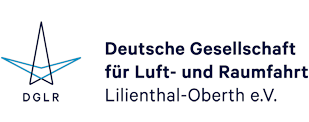DGLR-Publikationsdatenbank - Detailansicht
Autor(en):
H. Spark, F.J. Silvestre
Zusammenfassung:
We are witnessing increasing pace of commercial developments towards electric propulsion for smaller types of aircraft. At the same time, similarly to electric cars, available range is more limited as with fuel powered vehicles. Different from cars, aircraft design cannot compensate by simply increasing battery size and weight. In this context, flight range optimization becomes crucial, and significant gains can be achieved by optimizing the speed. Existing methods for optimal travel speed that consider the impact of a battery characteristics as Peukert effect and voltage changes on the performance have not investigated varying wind conditions and varying-wind range optimization does not include yet battery effects. As current developments in sustainable, electric aviation focus on smaller and slower aircraft types, wind has a relatively larger impact on the speed-to-fly as compared to twin-jets employed by airline operators. Wind-optimal flight has been viewed as a thrust optimization problem, similar to drag optimization in soaring flight, and has also been investigated with numerical methods that require on-ground evaluation. A more generic approach on speed-to-fly is described in this work by integrating aircraft-dependent aerodynamic and electric propulsion properties in an online evaluation method that makes use of 3D wind information. As motorised glider aircraft with their low power requirement are primary candidates for electric flight, the method is applied on a model of an electric glider. Different degrees of freedom are explored, namely the flight path angle, the throttle and airspeed. The method is based on data that manufacturers could supply or already do supply, making it generally applicable and the effect of considering the dynamic of the battery system is investigated. For the aircraft under investigation, results show that the optimal strategy in zero wind consists of changing between climbing and gliding flight and inclusion of the battery in the evaluation shifts the optimal zero-wind flight condition towards both lower throttle setting and lower climb angle. By including wind-optimal flight and battery effects in an online-method that can be readily evaluated for different types of aircraft, this work contributes to the development of a general method for extending range and enhancing the overall mission capabilities of electric aircraft.
Veranstaltung:
Deutscher Luft- und Raumfahrtkongress 2024, Hamburg
Verlag, Ort:
Deutsche Gesellschaft für Luft- und Raumfahrt - Lilienthal-Oberth e.V., Bonn, 2024
Medientyp:
Conference Paper
Sprache:
englisch
Format:
21,0 x 29,7 cm, 14 Seiten
URN:
urn:nbn:de:101:1-2411111304488.538635944176
DOI:
10.25967/630266
Stichworte zum Inhalt:
Electric Flight, trajectory optimization, guidance
Verfügbarkeit:
Download
- Bitte beachten Sie die Nutzungsbedingungen dieses Dokuments: Copyright protected
Kommentar:
Zitierform:
Spark, H.; Silvestre, F.J. (2024): Optimizing Speed-to-Fly for Enhanced Range of Battery-Powered Aircraft. Deutsche Gesellschaft für Luft- und Raumfahrt - Lilienthal-Oberth e.V.. (Text). https://doi.org/10.25967/630266. urn:nbn:de:101:1-2411111304488.538635944176.
Veröffentlicht am:
11.11.2024
